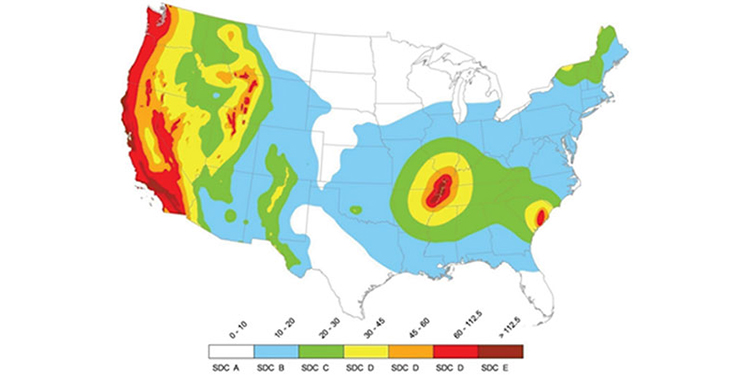How Does Seismic Design Affect Rack Systems?

Seismically designed rack is not just on the West Coast anymore.
Depending on where within the U.S. a facility is located, seismic design considerations may need to be taken into account when engineering, manufacturing and installing a pallet rack system. While this is especially prevalent on the west coast, it can also apply in other areas such as Memphis, Tennessee and Charleston, South Carolina.
The subsequent design decisions—all intended to increase the safety of any persons in proximity to a rack by reducing the risk of its collapse should an earthquake occur—are a result of a series of engineering calculations.
Section 2.6, “Earthquake Loads,” of RMI’s ANSI MH16.1-2012: Specification for the Design, Testing and Utilization of Industrial Steel Storage Racks includes a complete listing of the calculations to be performed by a qualified rack design engineer. Considerations include:
- Geographic region, denoted by what is referred to by building codes as Seismic Design Categories (SDCs), which range from A to F.
- Specific site location contours and subsequent design parameters, which can be determined via the United States Geological Survey (USGS) website.
- Soil classification
- Supporting concrete slab thickness
Generally speaking, rack that has been engineered to meet seismic safety requirements will have a thicker and larger base plate (sometimes called a foot plate) for anchoring each column to the floor. Each manufacturer configures a base plate that best protects a rack installation. Sizes can include 5 x 5, 6 x 6, 4 x 8, 5 x 8 or 6 x 8 inches, and in thicknesses ranging from 0.25- to 0.375-inch.
Further, a rack system designed for a seismic application will typically be much heavier than one engineered for a low seismic application. Regardless of your facility’s location, be sure to select a well-qualified professional engineer with pallet rack experience to oversee the design and permitting of your system.
Want to learn more about seismic design and rack safety? RMI includes a section on Seismicity in its list of Frequently Asked Questions.


